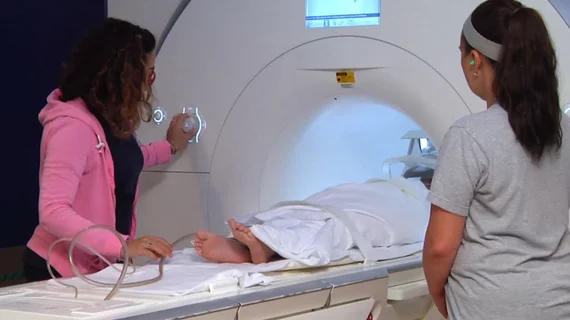Number of kids needing sedation prior to imaging drastically drops following intervention
Interventions addressing factors that influence the need for pediatric sedation prior to imaging could save institutions hundreds of thousands of dollars.
When implementing the Scan Without Anesthesia Program (SWAP), a team of researchers from the University of California was able to eliminate the need for sedation in 95% of children undergoing imaging from 2019 to 2022.
“In the SWAP program, multiple interventions are applied to prepare children for successful imaging without anesthesia,” explained Yi Li, MD, of UC-San Francisco and co-authors.
Some of these interventions include counseling with pediatric specialists on what to expect during the exam, preparatory phone calls, instructional videos, “mock” MRI scanners and other age-specific guidance and protocols. SWAP does lean heavily on caregiver commitment, as they are required to participate in the exams, but it also has resulted in significant success in reducing the amount of children requiring sedation prior to imaging.
Of 731 patients included in the analysis, 698 had successful scans without sedation. Patient factors, such as the absence of any developmental delays, being older in age and being female were the greatest predictors of exam success. Imaging-related factors like scan duration and modality did not influence success rates. The team suggested this finding provides evidence supporting SWAP for any imaging modality.
The 95% success rate produced an average cost savings of $139,367.80 per year, according to the team’s data. This could be partially attributed to increased throughput because children who participated in SWAP were fully prepared for their exam and did not require extra prep time.
Although the number of unsuccessful scans was too small (33) to draw additional conclusions on their cause, the authors maintain that their high success rate “is a testament to the efficacy of this program.”
To research is published in Academic Radiology.

